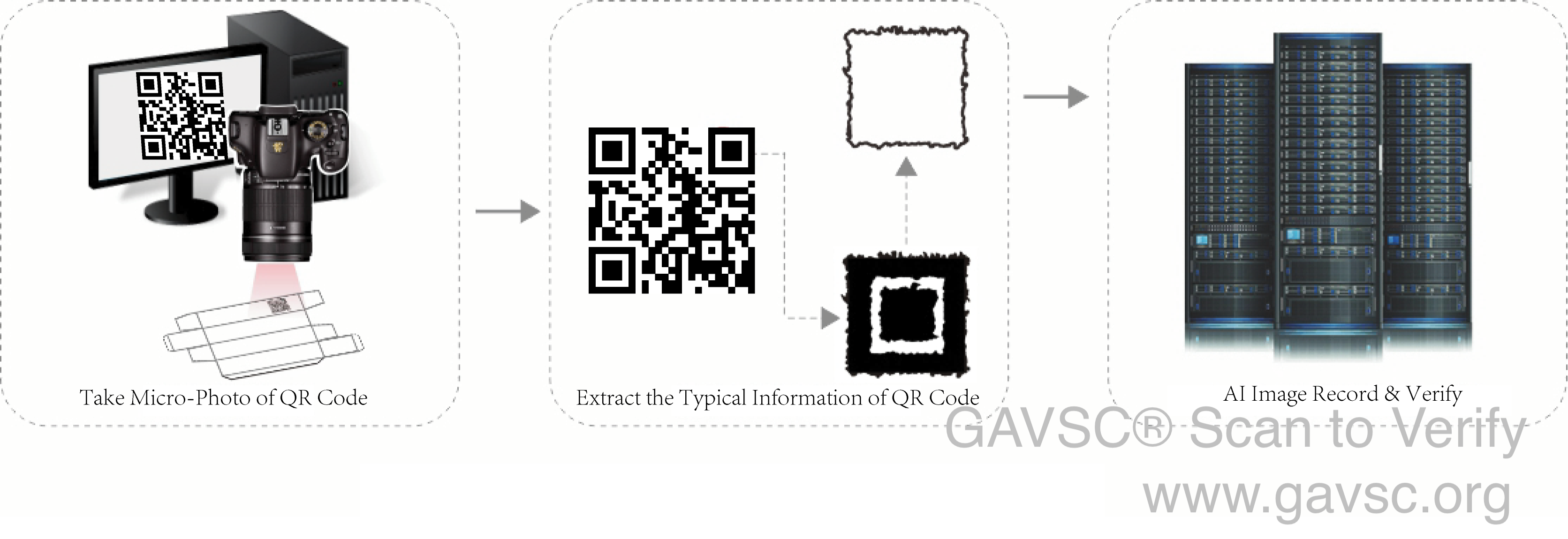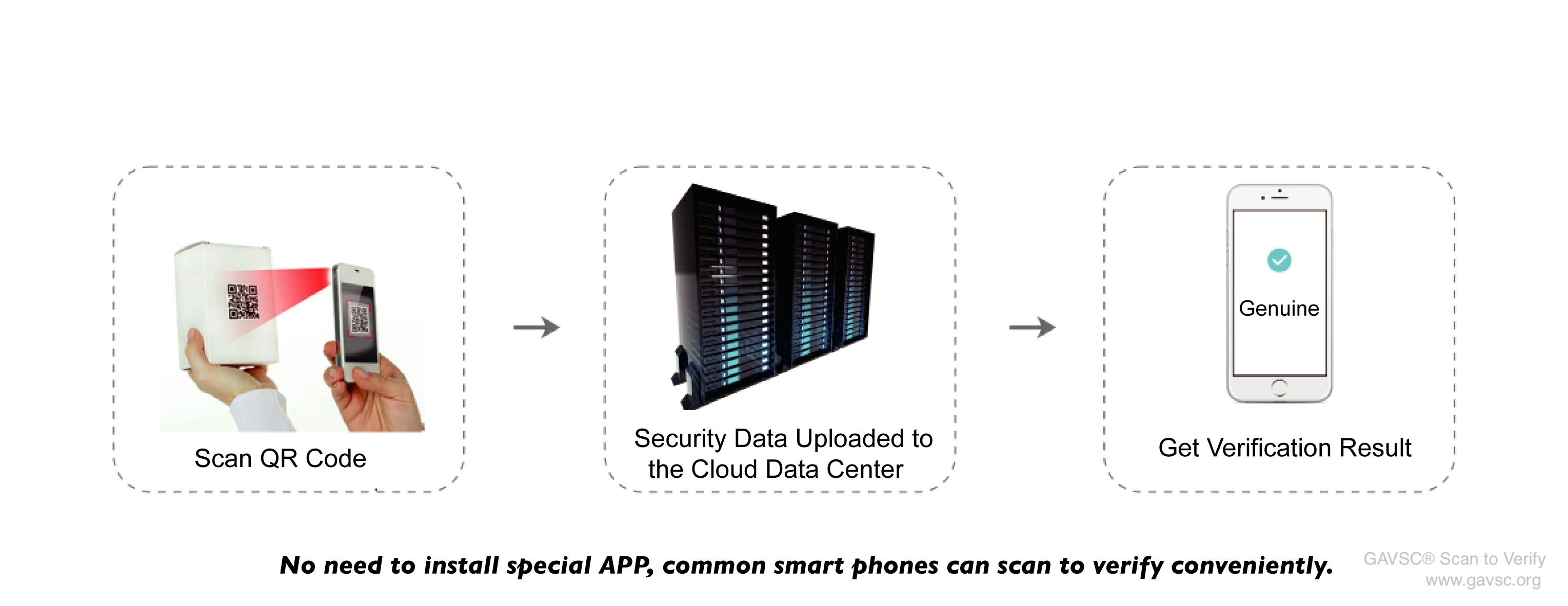Dactylogram Security
With a top coating to aid ink infiltration ability, the inkjet printing on paper and other substrate surfaces can occur many micro & random sawtooth at the edges of the printing before drying. We use this technology to print the unique QR code, and take a micro photo of each unique QR code and the sawtooth at the edge of each code, recording them in the cloud database as a security file, which can be used to identify the authenticity.
Micro-sawtooth is a natural random physical feature with randomness, uniqueness and unrepeatability. Using artificial intelligence image recognition technology to identify the micro - sawtooth matching can accurately verify the products authenticity.
To print a special top coating on label stocks to aid QR Code infiltrate and dry quickly.

To take photos of QR Codes and upload to Cloud Data Center.

Scan to Verify

Why Security and Impossible to Counterfeit?
Firstly, it can not be avoided that the ink infiltrates to the edges of printing and occurs micro-sawtooth. Even if the counterfeiters try to copy the sawtooth with high cost, the ink will spread again to form a new sawtooth that is different from the original micro-sawthooth.
Second, ultra-thin fluffs can be added to the printing ink. The thickness of the ultra-thin fluffs is less than 0.03mm, which is less than the printing limit (0.06mm is the width of the narrowest line a printing press can print). Printing copy of microscopic burrs and fluff width and other copy characteristics, must be different from the original. This makes it impossible for counterfeiters to reproduce false villi of less than 0.03mm in width, even with the most sophisticated commercial printers at the market.


